What is hyperspectral imaging?
Humans see shape, features, color, and texture, and make decisions regarding these characteristics because visible spectrum light energy reflects off objects, is captured by the eye’s lens, imaged on the eye’s retina, and (finally) gets interpreted by the brain.
Similar to the vision process above, hyperspectral imaging uses the infrared region of the spectrum, a camera, computer, and photo spectroscopy to “see” an object’s special characteristics repeatably, with a high level of accuracy, and little-to-no human involvement. In addition to everything a human can see, characteristics such as quality, ripeness, general health, and specimen type can also be discerned; important additional analysis previously gained through a human inspector’s subjective experience and interpretation, although limited by their visual acuity and visual cues (color, shape, size, texture, differences).
At the core of the hyperspectral application is the photo spectrometer, which uses a specimen’s reflected spectral profile to determine its complete chemical makeup. When coupled to a computer, this profile is used to control mechanical gates, air nozzles, arms, alarms, and the like, to isolate the non-acceptable from the acceptable.
As an example, hyperspectral imaging is used in agricultural processing to determine the quality and purity of grain, easily identifying whether or not the grain is contaminated with anything, such as fungus or mold. Hyperspectral imaging, when paired with machine vision technology, creates an automated material sorting system, optimizing grain classification, processing speed, and processing precision.
Applications for hyperspectral imaging are virtually endless, from food processing to chemical and materials sciences and civil engineering to medicine and astronomy.

Where do fiber optics come in?
As mentioned previously, a spectrometer is required to capture a hyperspectral image.
There are three different varieties of hyperspectral imaging, each requiring a different configuration type of spectrometer, as follows:
- Snapshot — An array of stationary sensors captures images as an area camera does; the entire scene, in a wide field, at one moment in time.
- Whisk broom — A single sensor captures light reflected by an oscillating mirror, generating images one pixel at a time.
- Push broom — A single line of sensors moved along its subject, or sits stationary as the subject is moved past it, building images one 1-pixel high x 1 row at a time. Line scan cameras are a good example of a collector for push broom sensor arrays.
Because each imaging spectrometer has a unique sensor configuration, the most efficient method of image generation matches the lighting configuration to the sensor configuration. Furthermore, the spectrometer can only discern a specimen’s makeup if the lighting source is high in infrared broad band energy. The best matched source is a black body radiator, which emits continuous wavelengths over a broad band.
Here’s why fiber optic lighting readily meets these needs. Fiber optic lighting geometry is adaptable (fiber optic lighting components can be configured to output spots, lines, rectangles, and circles of IR energy to exactly match sensor configurations; and the output source of a tungsten halogen fiber optic illuminator is a black body radiator, predominantly outputting broad band IR. The resulting match of geometry and abundance of energy is a best fit solution to assure high and accurate processing speed, particularly in hyperspectral scanning applications.
Managing illumination details
- To optimize the light concentration, a lens is typically used. Make sure the lens material can transmit (rather than absorb) IR wavelengths.
- When working with a fiber line, make sure the lens housing (and the lens) does not flex, that it stays on plane.
- High power IR energy is hot, and it makes everything it touches hot! To ensure the lighting system doesn’t melt, special adhesives and optical management strategies should be integrated into the system. To ensure the product being inspected is safe, keep the light or the product moving!
- Run the lamp(s) voltage as low as practical to maximize their useful life. If your process is cyclic, turn the lamp(s) off during dwell periods.
- The scanning area should overlap the field of view to optimize energy uniformity.
- The further light source placement is from the field of view, the more uniform it will be.
- If using fiber optic components, the distance from the source to the emitting head of the fiber is important; keep the length as sort as possible to maximize transmission.
Hyperspectral imaging is an important part of processing automation. It is accurate, revealing, and fast, when the best fit components come together to form a system.

